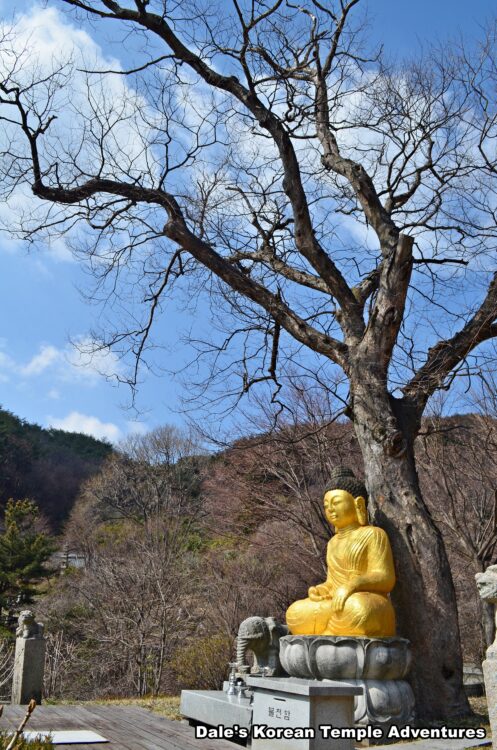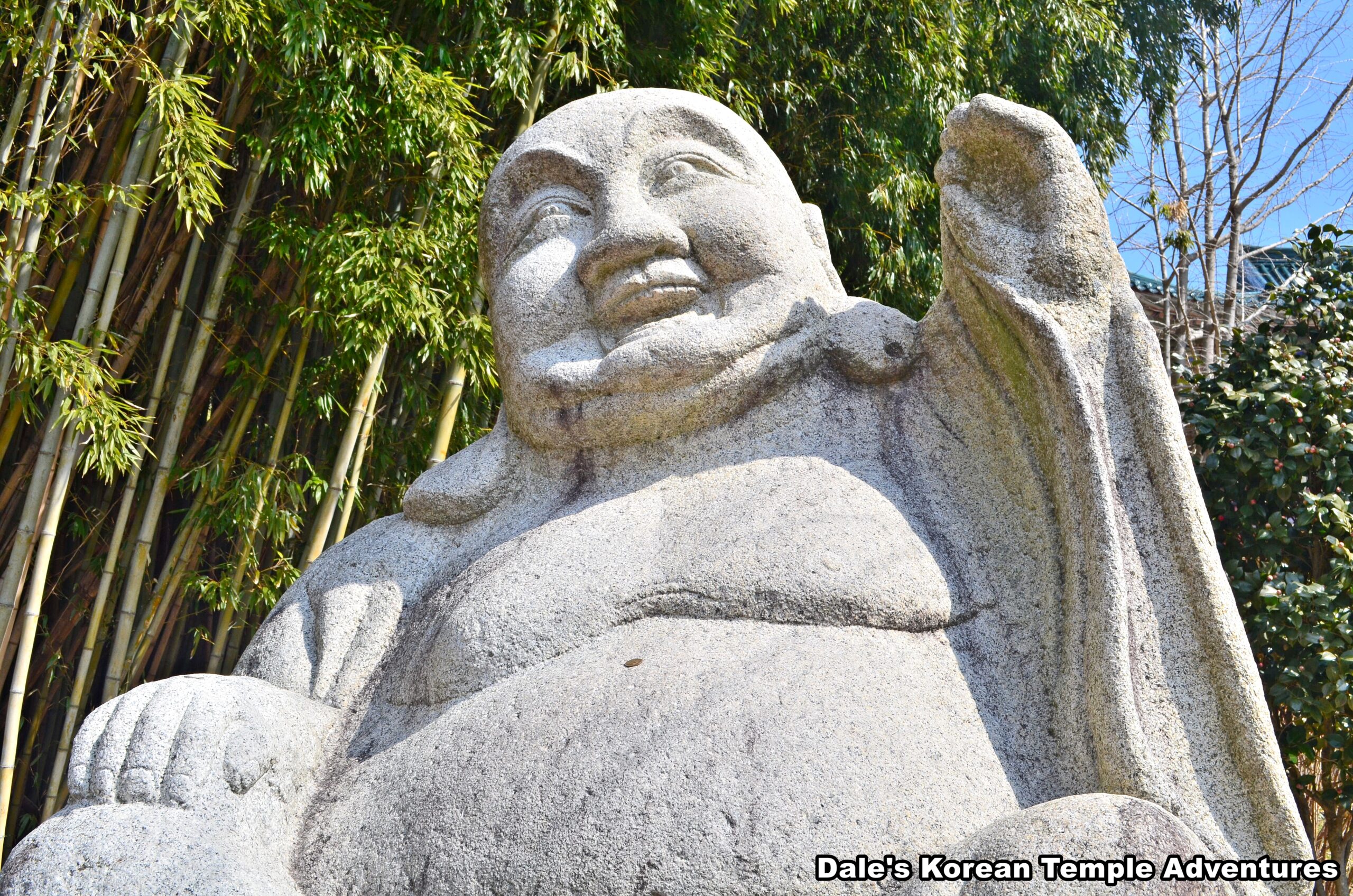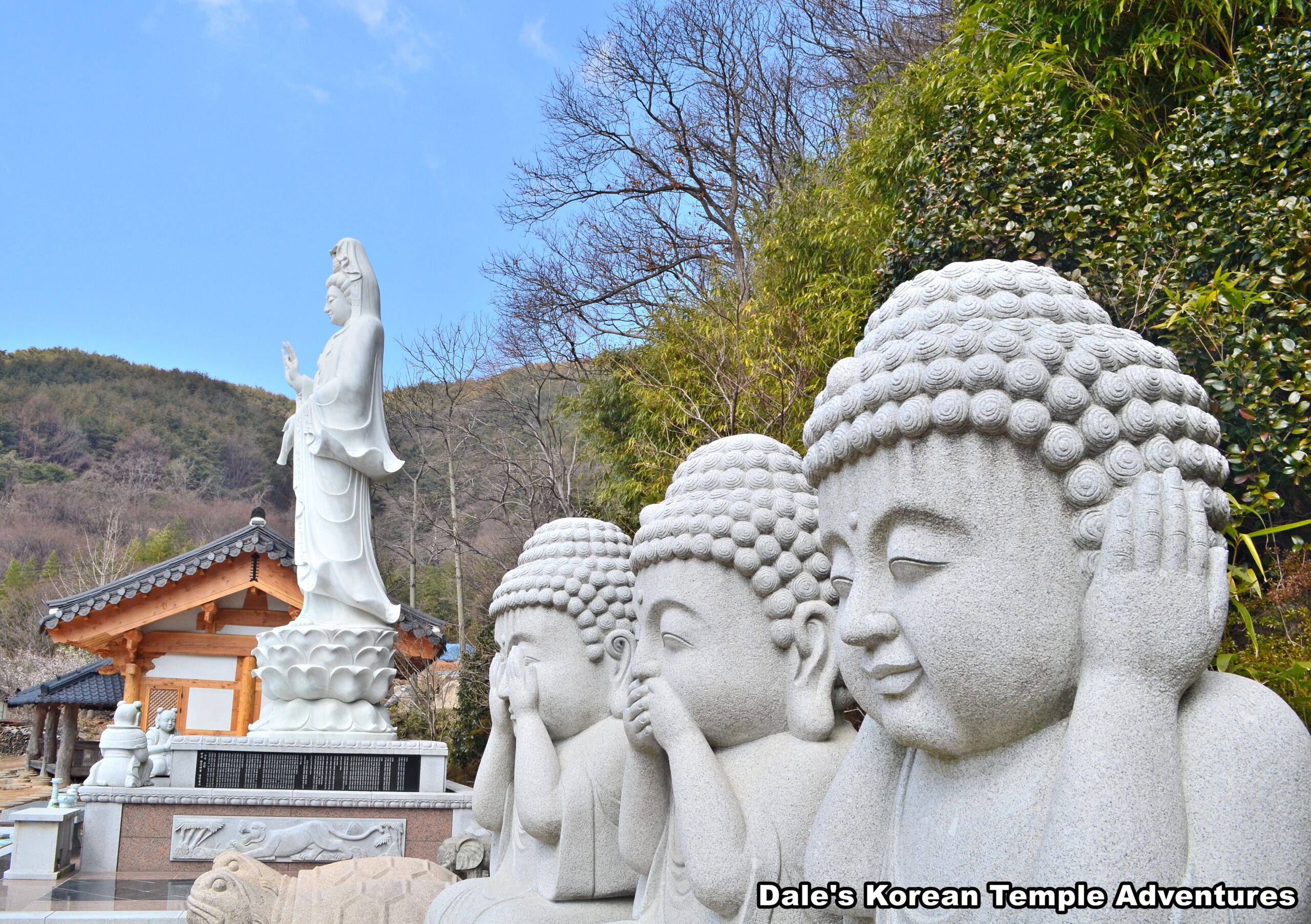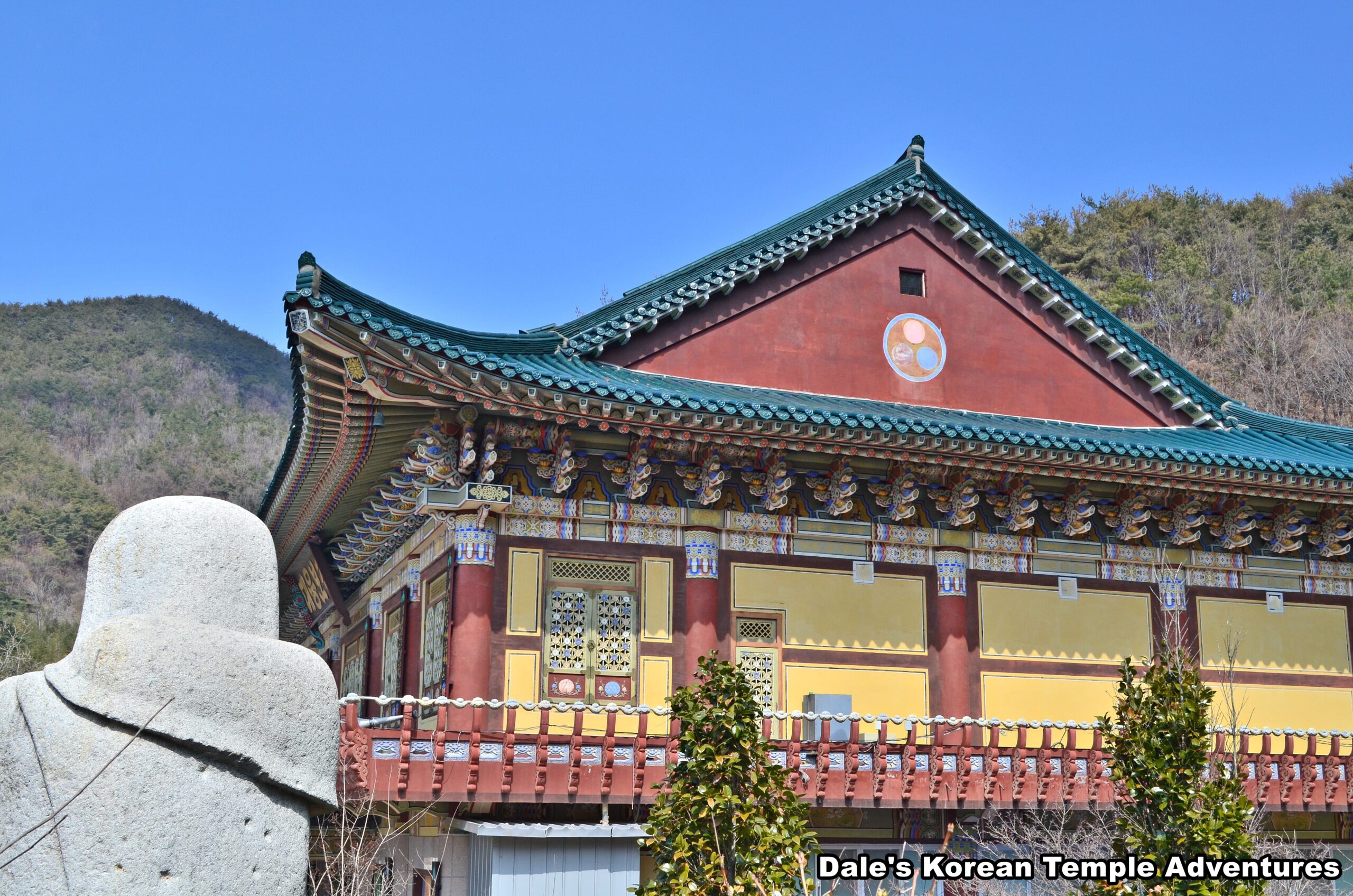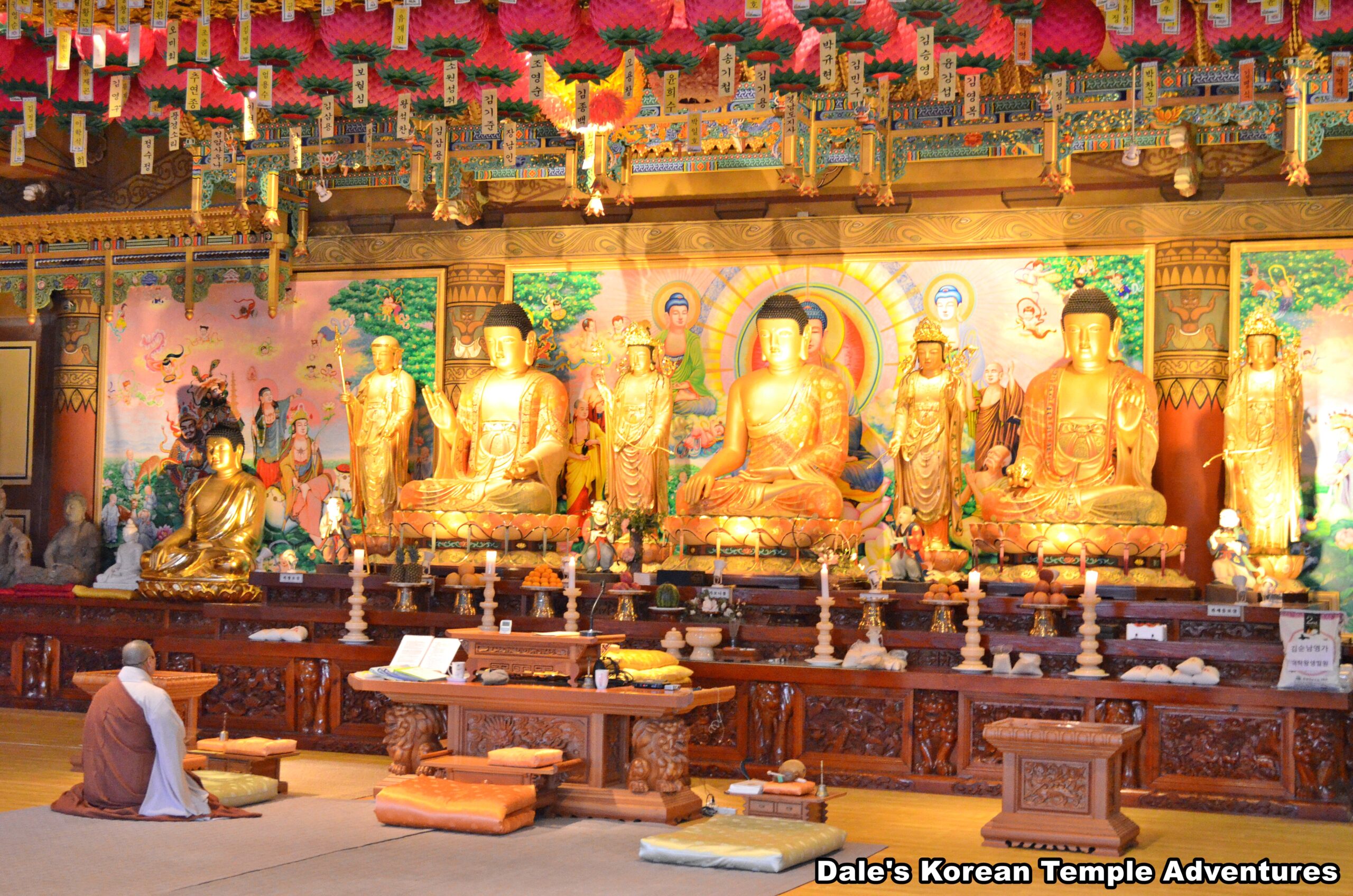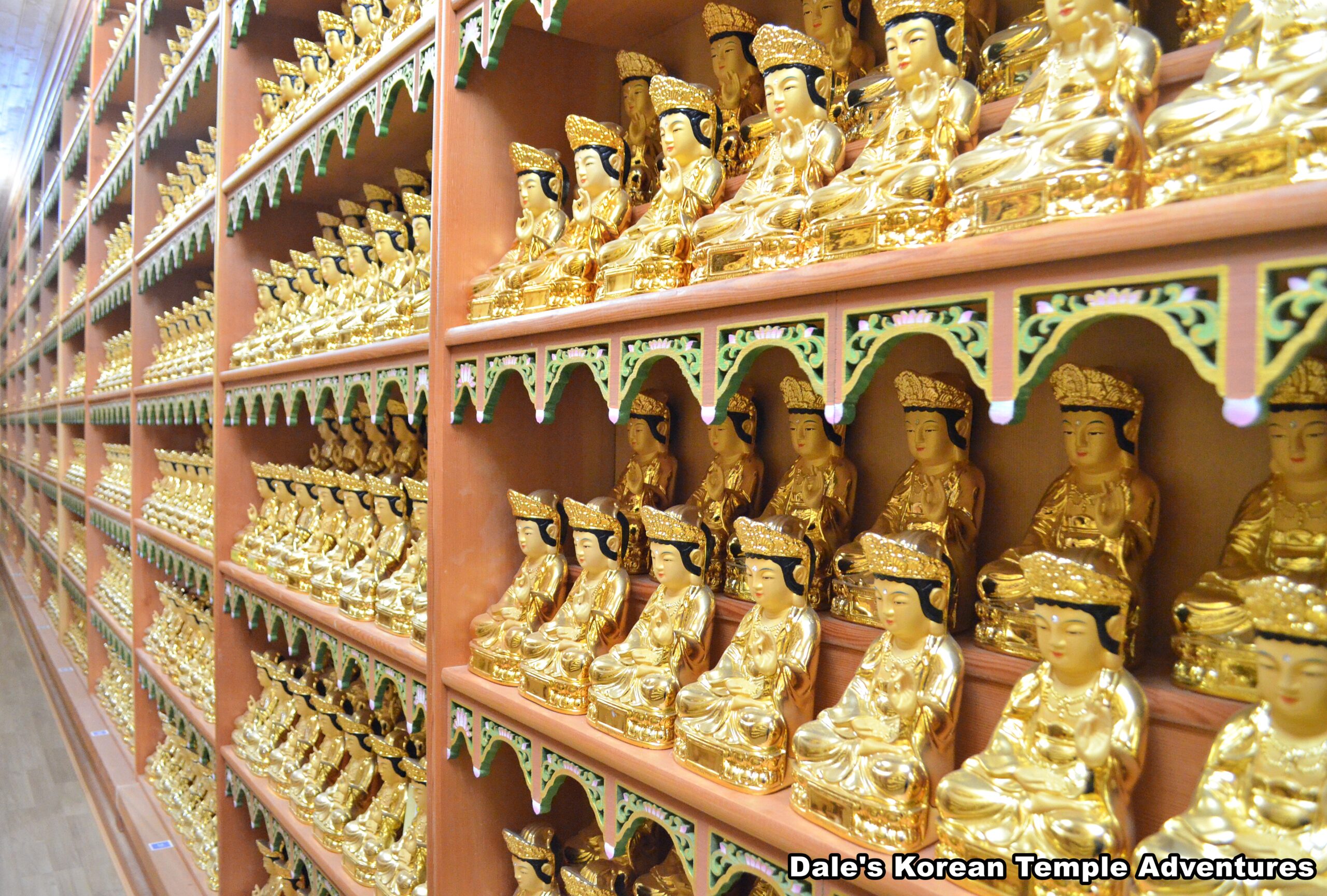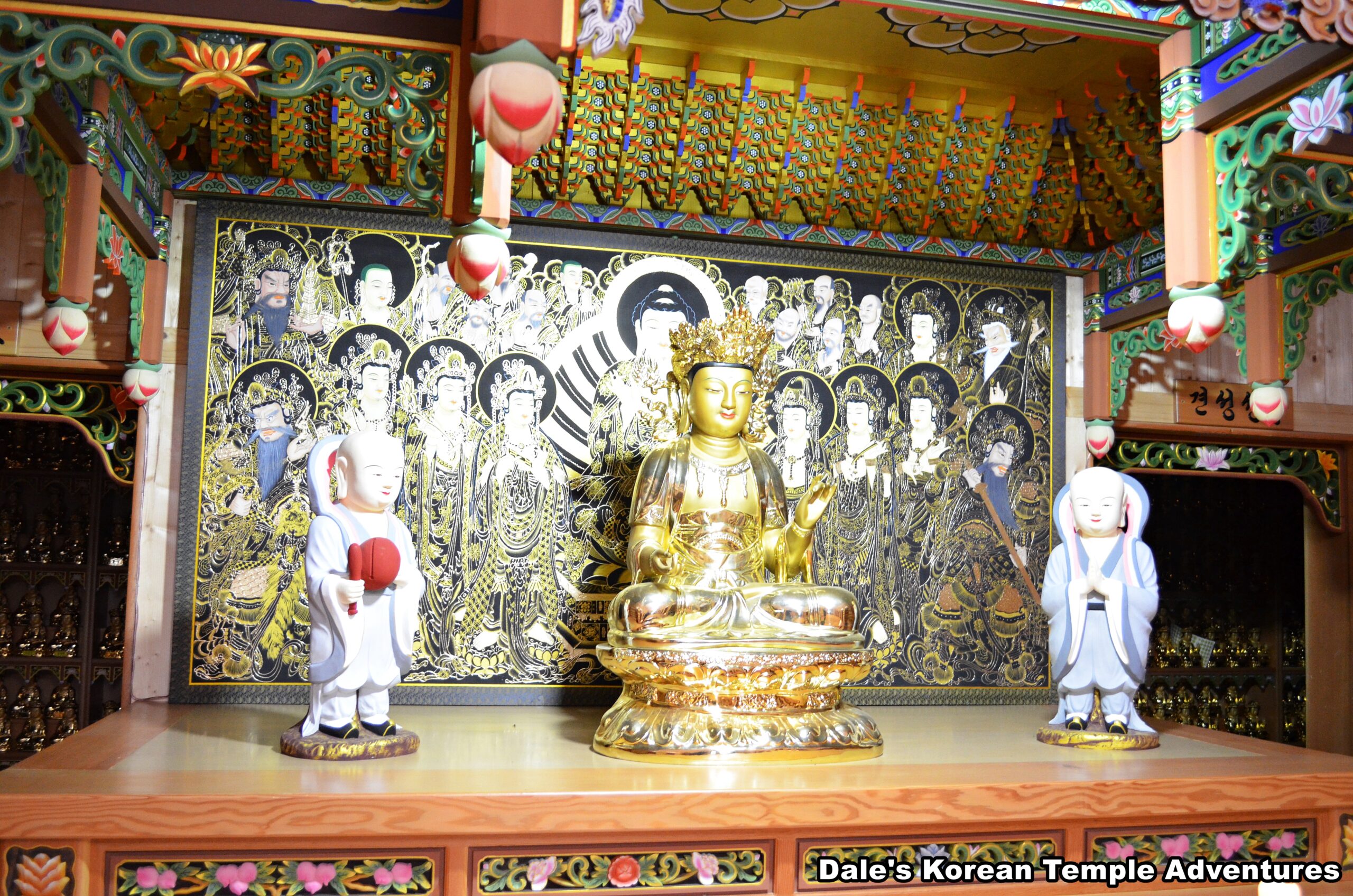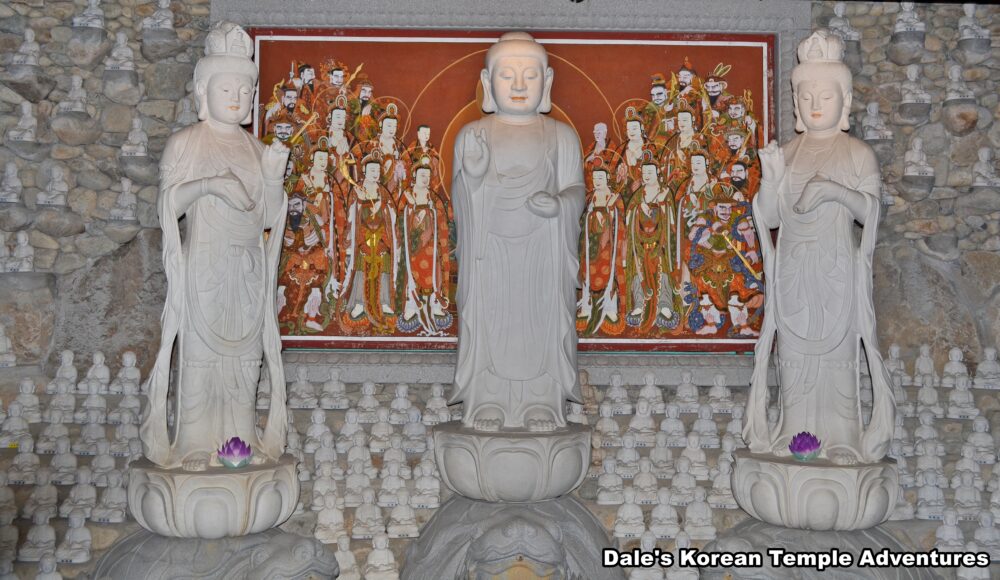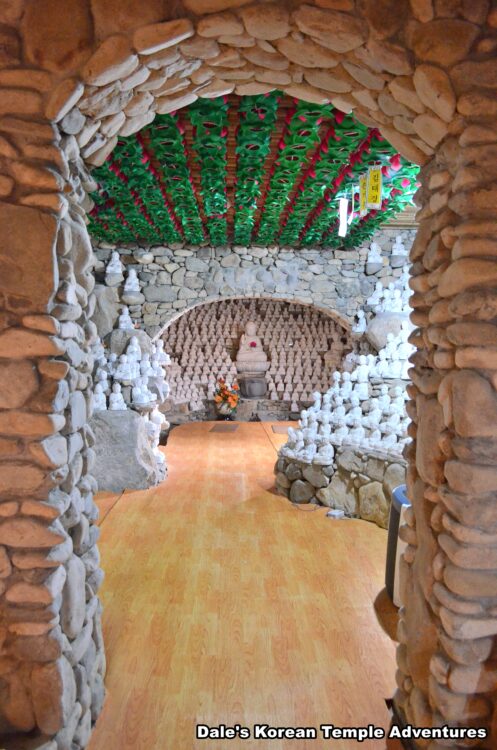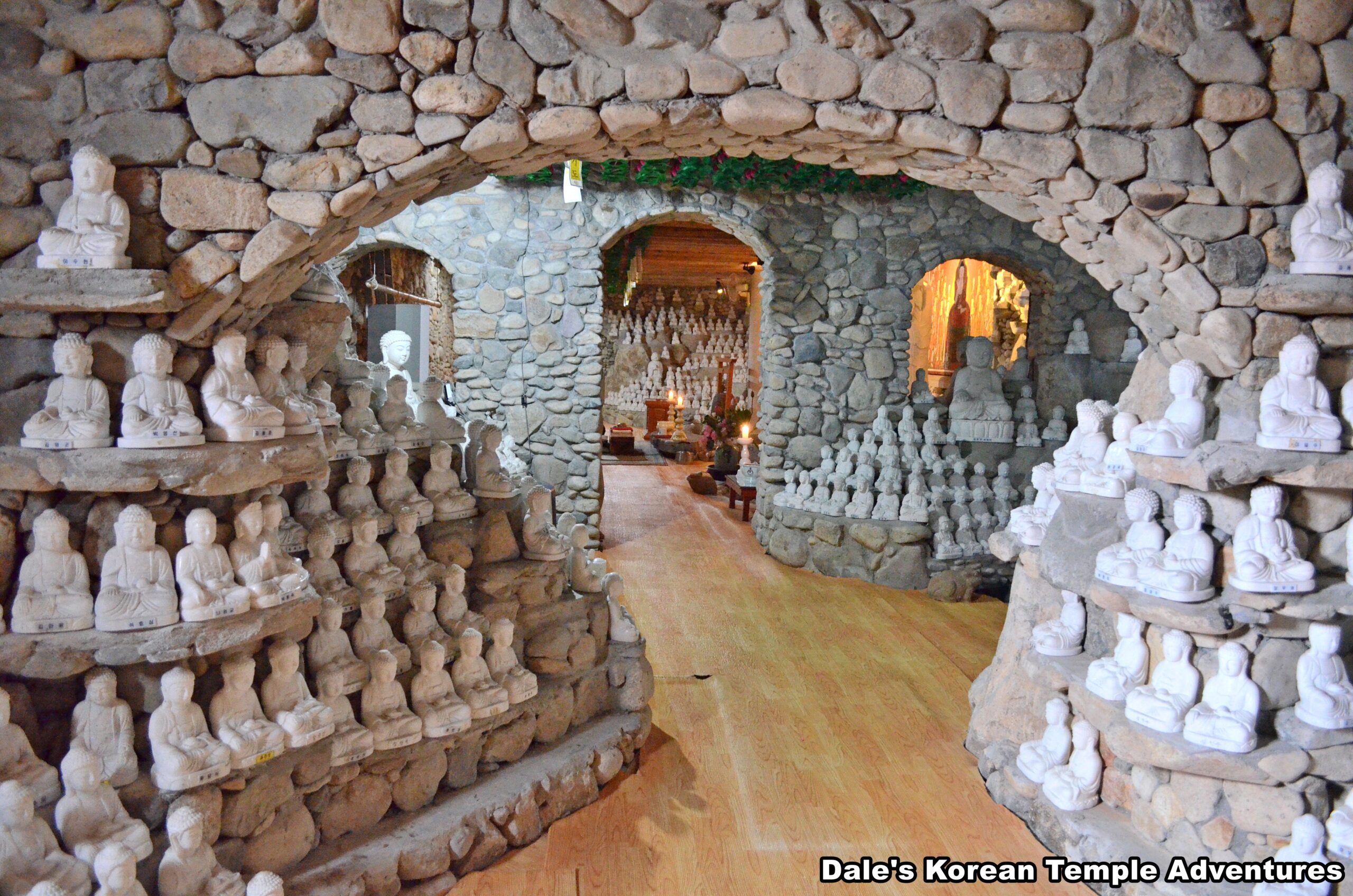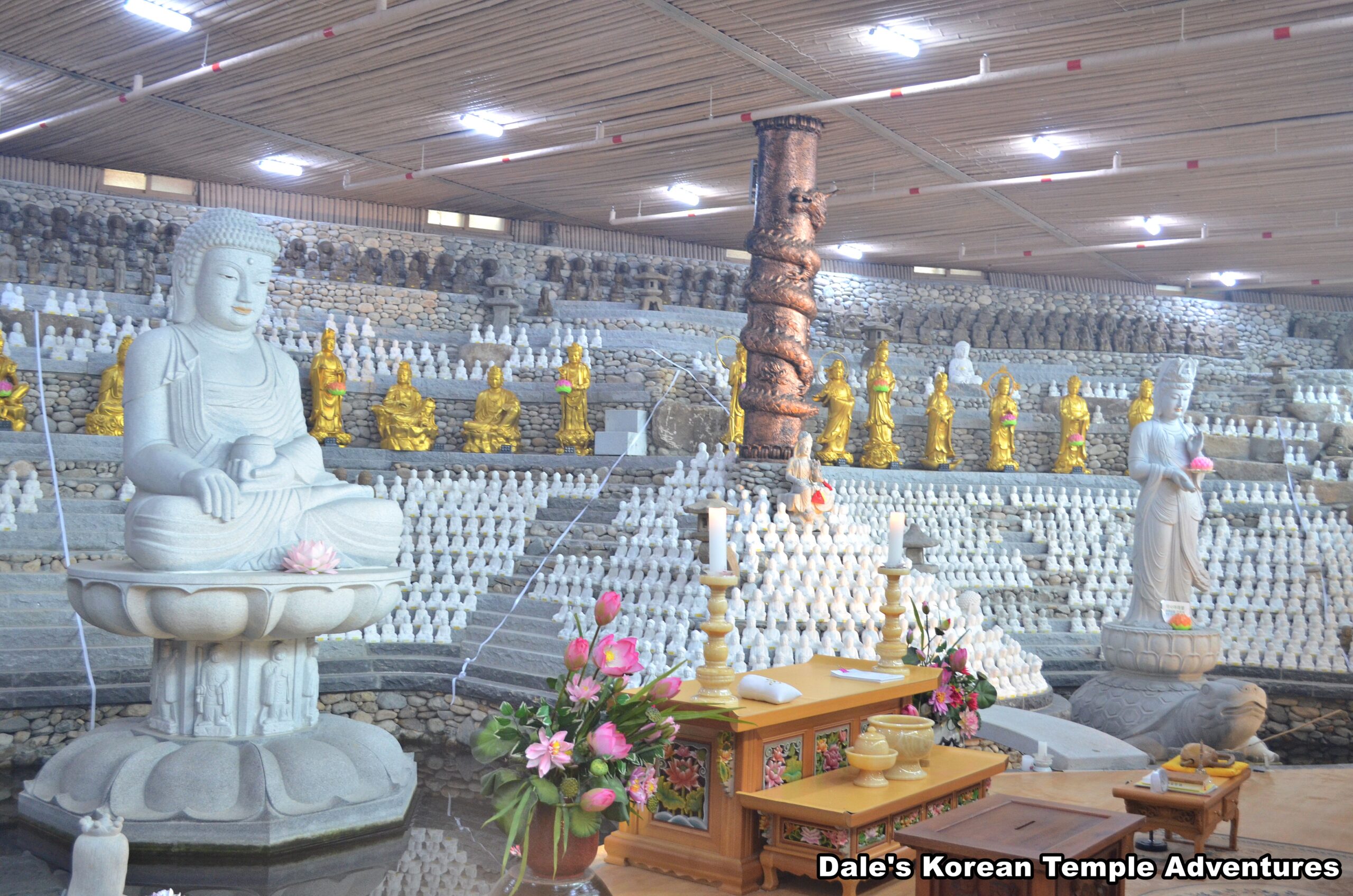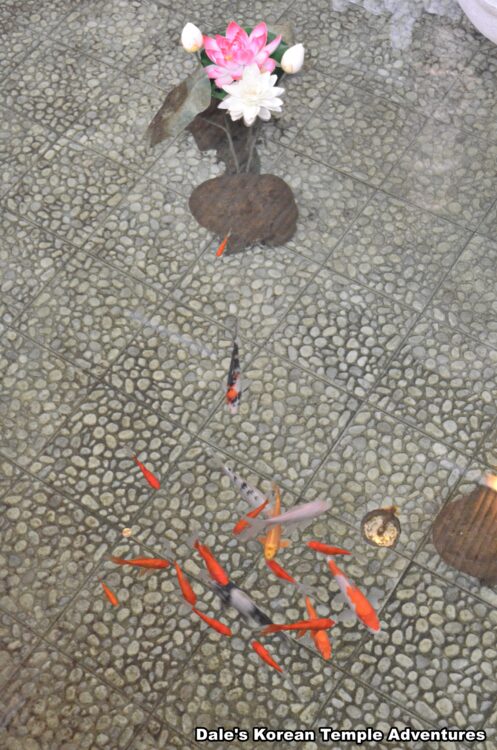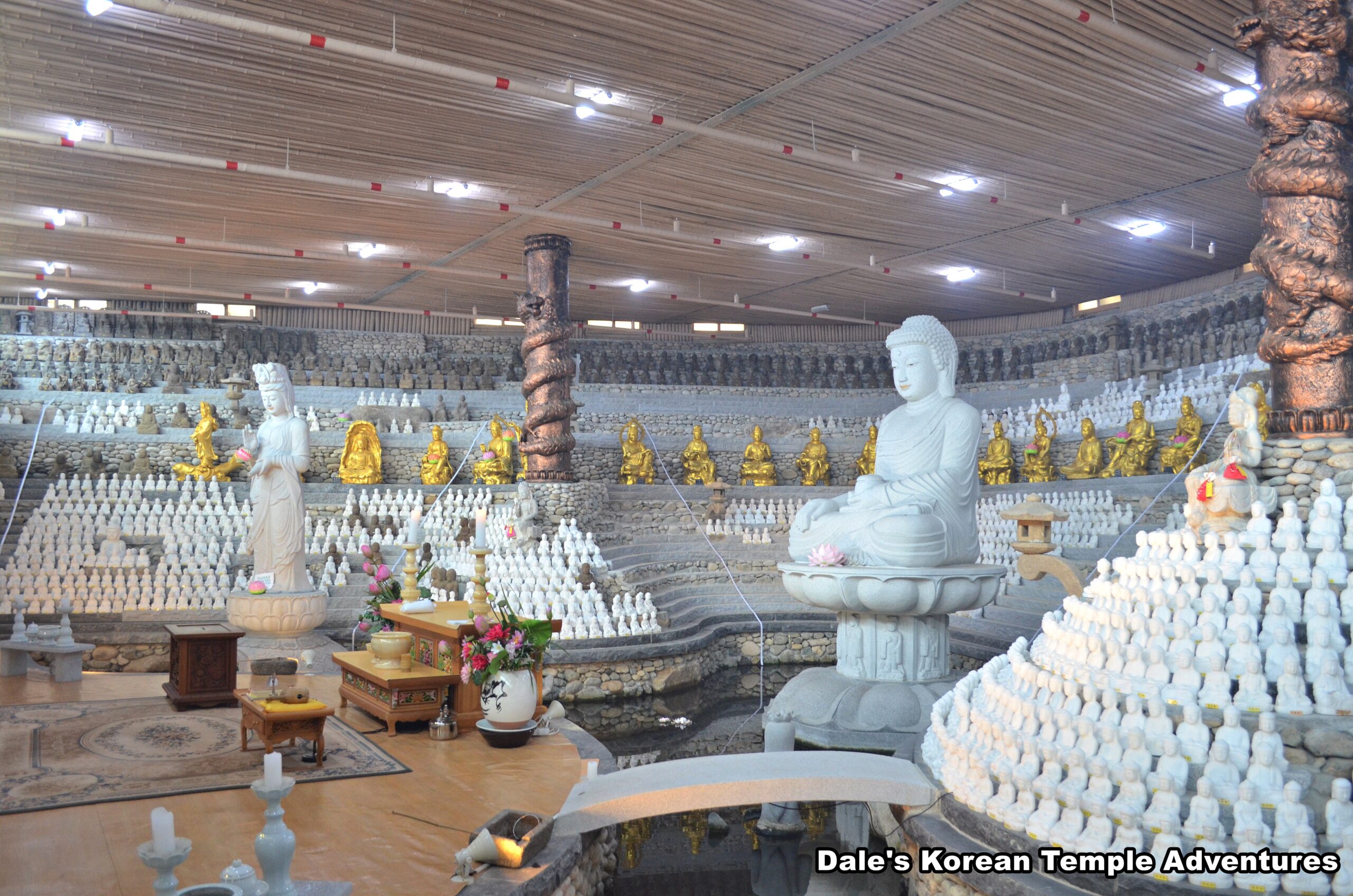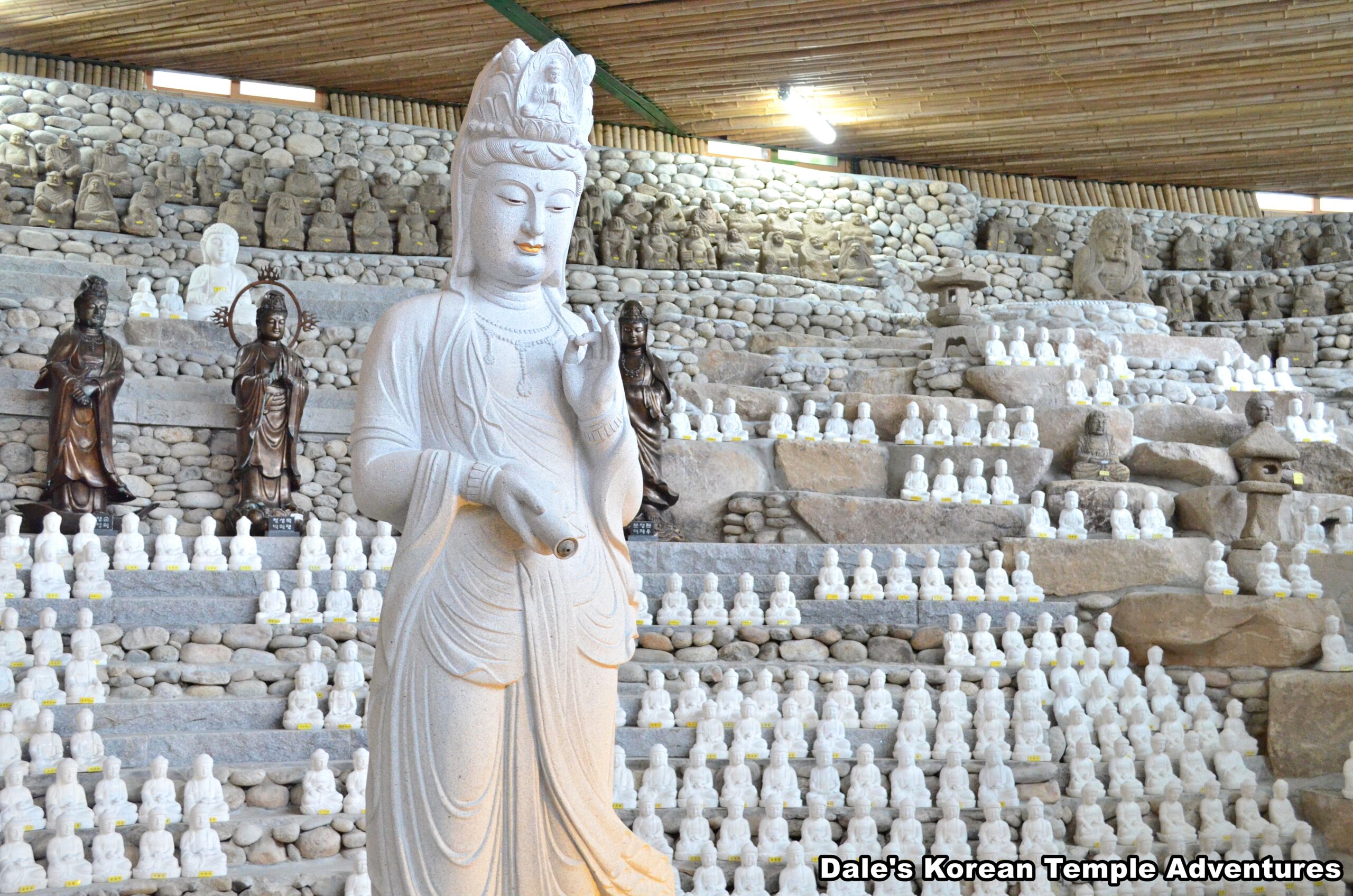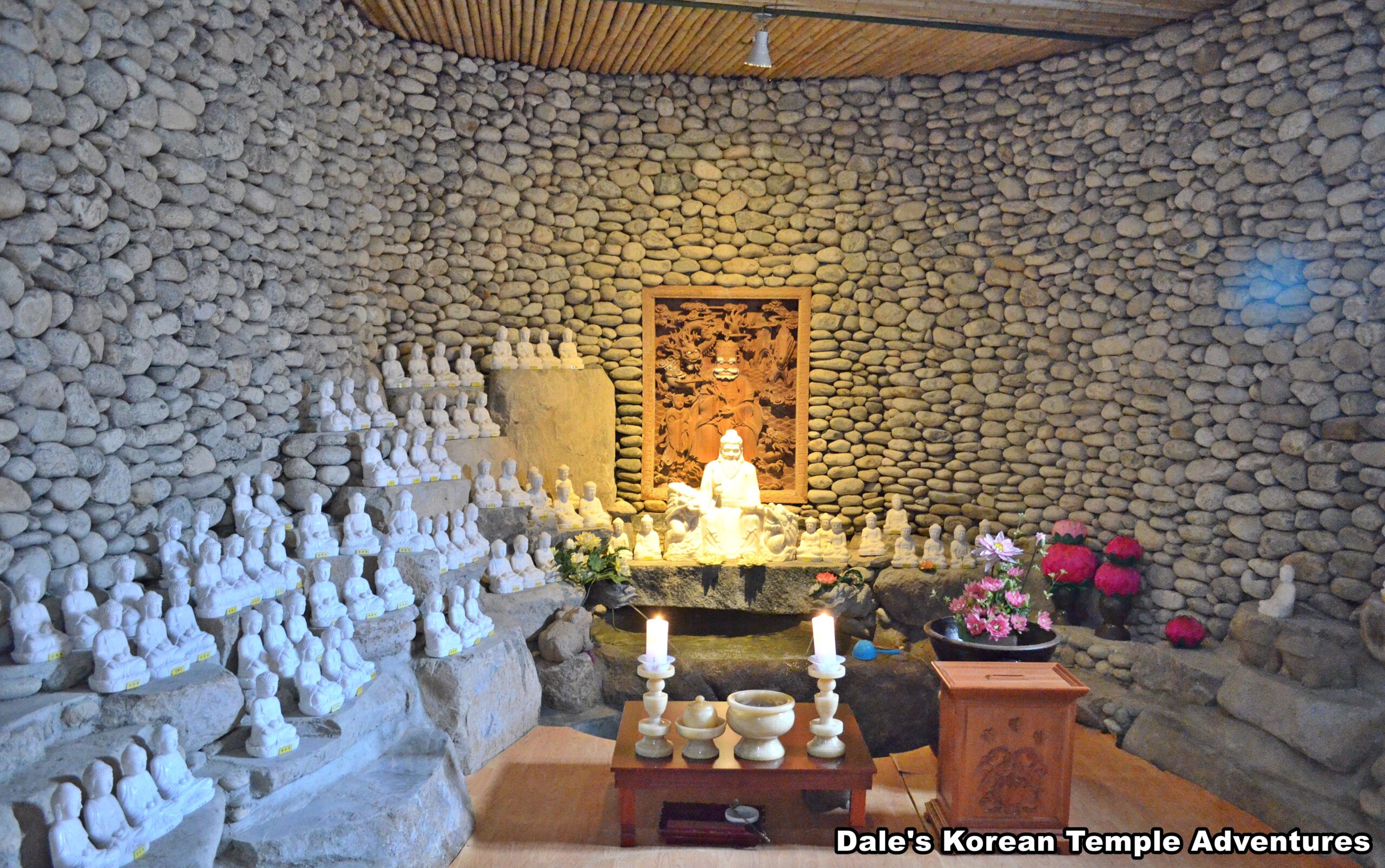Yeoyeojeongsa Temple – 여여정사 (Miryang, Gyeongsangnam-do)
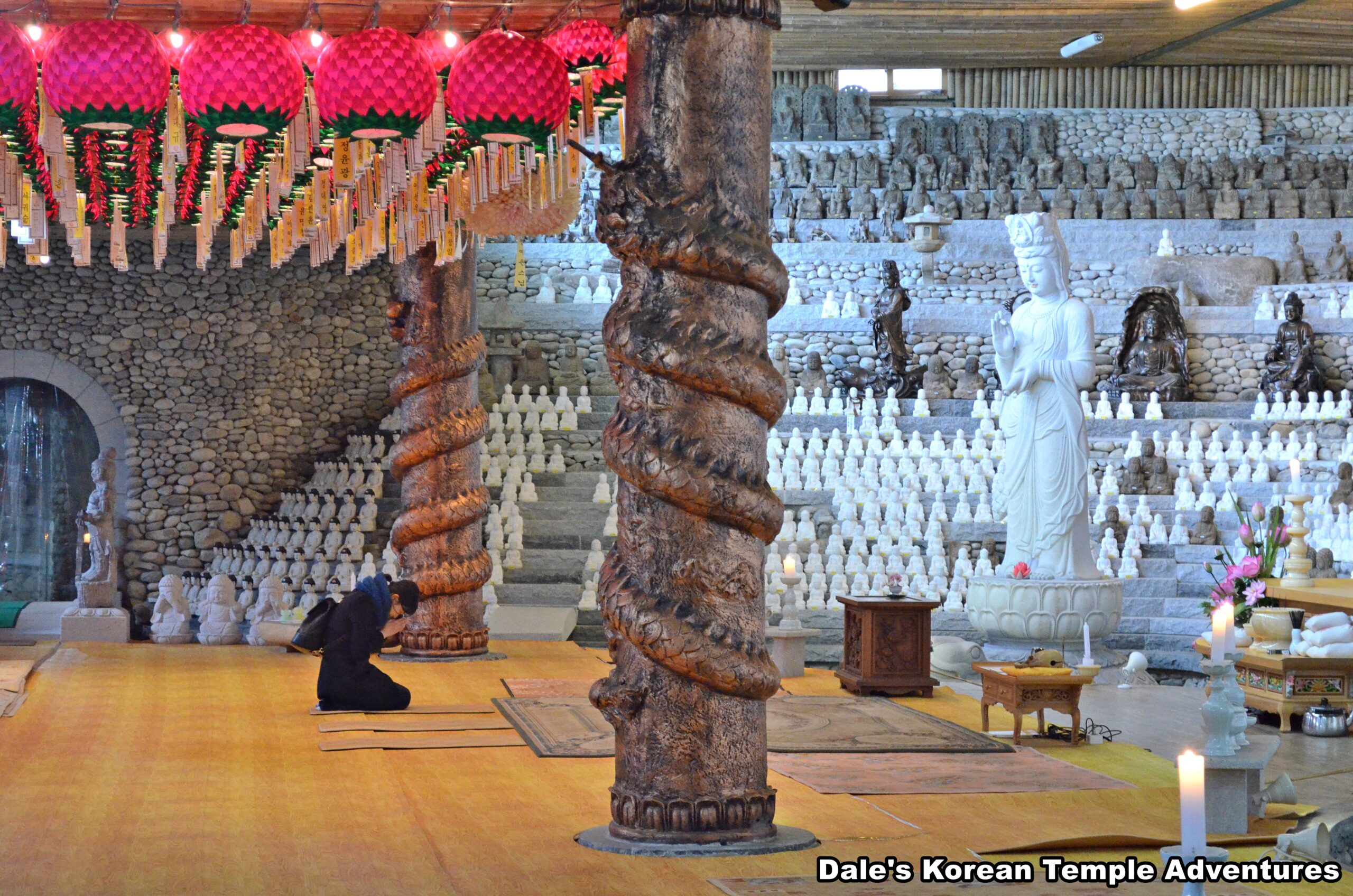
Temple History
Yeoyeojeongsa Temple is located on the western slopes of Mt. Geumosan (766.1 m) in southern Miryang, Gyeongsangnam-do. The name of the temple means “Watch, Listen, and Act With a Still Mind Temple” in English. The head monk at Yeoyeojeongsa Temple first opened a temple in Busan in 1995. He called this temple Yeoyeoseonwon Temple. Then, in 2005, he bought some land in Miryang, where he decided to build Yeoyeojeongsa Temple. And it would take a decade and a half to complete the temple.
Temple Layout
As you make your way up to the temple parking lot, you’ll pass by four stone statues of the Four Heavenly Kings. Having passed through the temple parking lot, you’ll notice a golden statue dedicated to Seokgamoni-bul (The Historical Buddha) under an old gnarled tree. Making your way to the right of this golden Buddha, and past the stone statue dedicated to Podae-hwasang (The Hempen Bag), you’ll make your way up an incline towards the two-story main hall.
As a result of Yeoyeojeongsa Temple being built in the 21st century, everything at the temple is new including the two-story main hall. The first floor of the main hall is the Geukrak-jeon Hall. Sitting all alone on the main altar inside the Geukrak-jeon Hall is a statue dedicated to Amita-bul (The Buddha of the Western Paradise). The rest of the interior of the Geukrak-jeon Hall is filled with tiny Gwanseeum-bosal (The Bodhisattva of Compassion) statues. There are numerous wooden alcoves that are filled with these figurines.
The second story of this structure, on the other hand, acts as the Daeungbo-jeon Hall. Along the expansive main altar, you’ll find a collection of seven statues. The statue in the middle is dedicated to Seokgamoni-bul. To its left and right are two standing statues dedicated to Bohyeon-bosal (The Bodhisattva of Power) and Munsu-bosal (The Bodhisattva of Wisdom). These statue are then joined on either side by Amita-bul to the left and Yaksayeorae-bul (The Medicine Buddha, and the Buddha of the Eastern Paradise) to the right. Rounding out the collection of statues, and to the far left, is a statue dedicated to Jijang-bosal (The Bodhisattva of the Afterlife). And to the far right is a standing statue dedicated to Gwanseeum-bosal. The collection of seven statues rest under a large golden canopy, or “datjib” in Korean.
To the left of the two-story main hall, you’ll find a large stone triad centred by a statue of Seokgamoni-bul. And out in front of the main hall is the temple’s Jong-ru Pavilion with a large Brahma Bell housed inside it. Finally, and to the right of the main hall, you’ll find a large collection of stone statues. This collection includes baby monks, the Bodhidharma, Gwanseeum-bosal, and a set of three monks that depict the idea of “See No Evil, Hear No Evil, and Speak No Evil.”
But let’s be honest, the real reason you’ve traveled all this way to Yeoyeojeongsa Temple is to see the subterranean Yaksa-jeon Hall, which just so happens to be burrowed out from the the side of the neighbouring mountain. The Yaksa-jeon Hall was completed in April, 2005. The entry to the cave lies to the left of the Daeungbo-jeon Hall. Stepping inside the cave entryway, you’ll be greeted by a number of statues. A little further along, and hanging a right, you’ll enter into the lower chamber inside the Yaksa-jeon Hall. Instantly, you’ll be welcomed by a triad of statues centred by Yaksayeorae-bul. A little further along, and you’ll notice a seated stone statue dedicated to Sanshin (The Mountain Spirit). This shaman statue is surrounded by dozens of smaller sized stone statues dedicated to Yaksayeorae-bul. Finally, and at the end of the lower chamber, you’ll find a stone enclosure with some more smaller sized Yaksayeorae-bul statues. In fact, the entire lower chamber is filled with these beautiful, tiny, stone statues. Joining these tiny stone statues is a larger seated image dedicated to Yaksayeorae-bul, once more.
Having exited out of the lower chamber, and now taking the flight of stairs upwards, again, you’ll pass by a collection of brown Nahan (The Historical Disciples of the Buddha) statues. Past these, and over a stone bridge that spans a stream of water, you’ll enter into the upper chamber inside the Yaksa-jeon Hall. Seated in the centre of a large Koi pond, you’ll find a seated image of Yaksayeorae-bul cradling a medicine jar atop a stone pedestal. Book-ending this statue of Yaksayeorae-bul, and mounted atop a pair of turtles, are two standing statues dedicated to Gwanseeum-bosal. The twin water-pouring statues of the Bodhisattva of Compassion are backed by an additional thirty-three golden statues of Gwanseeum-bosal. And like the lower chamber, the upper chamber surrounds the large statues with smaller, white statues dedicated to Yaksayeorae-bul.
Over a stone bridge to the far right, and past another stone statue dedicated to Gwanseeum-bosal, you’ll find yourself in the centre of a small ante-chamber that houses a statue dedicated to Yongwang (The Dragon King). This statue is backed by a beautiful wooden relief of the shaman deity. Stepping into this ante-chamber, you’ll find a small rock opening to your left for the Sanshin-gak Hall. Inside this shaman off-shoot is a statue and mural dedicated to Sanshin (The Mountain Spirit) and Dokseong (The Lonely Saint).
How To Get There
From the Busan train station, you’ll need to take a Mugunghwa train to the Samrangjin train station. From there, you’ll need to take a taxi to get to Yeoyeojeongsa Temple. The ride should last 8.4 km, and it’ll cost you around 12,000 won (one way).
Overall Rating: 8/10
There are quite a few things to see in and around Yeoyeojeongsa Temple including the large collection of statues and the modern two-story main hall. However, it’s the subterranean Yaksa-jeon Hall that’s the star attraction at Yeoyeojeongsa Temple. You won’t find another shrine hall dedicated to the Medicine Buddha like the one you’ll find at Yeoyeojeongsa Temple. In fact, it’s nearly impossible to find such an elaborate cave shrine hall on the rest of the Korean peninsula. Take your time, and enjoy this subterranean shrine hall because there’s a lot to take in.
